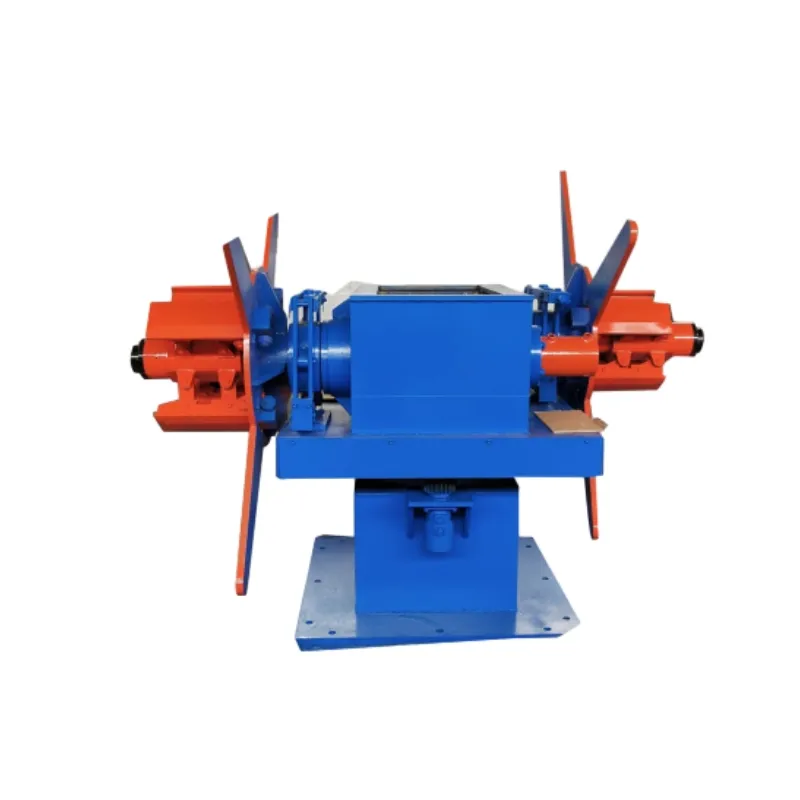Understanding the Process and Design of Roll Forming Dies in Manufacturing
Understanding Roll Forming Dies A Key Component in Manufacturing
Roll forming is a continuous bending process where sheet metal is passed through a series of rolls to achieve the desired cross-section. This highly efficient manufacturing technique is widely used in the production of various metal products, from thin-walled sections to complex configurations. At the heart of roll forming lies the roll forming die, a crucial component that determines the accuracy, efficiency, and quality of the final product.
What is a Roll Forming Die?
A roll forming die comprises a series of uniquely shaped rollers precisely engineered to shape the metal as it passes through them. Each roller is designed to perform a specific function, guiding the metal into the desired form while minimizing waste and ensuring consistency. The design and setup of these dies are essential aspects of the roll forming process, impacting everything from the geometry of the final product to the speed of production.
The Design Process
The design of roll forming dies involves several key considerations. First and foremost is the material being formed. Different metals have varying properties, such as tensile strength and ductility, which influence how they behave during the forming process. Common materials include steel, aluminum, and various alloys, each requiring tailored roller designs to accommodate their specific characteristics.
Another critical factor in die design is the desired final shape of the product. Engineers utilize computer-aided design (CAD) software to create detailed models of the die, simulating how the metal will flow through the rollers. This virtual prototyping allows for adjustments to be made before physical production, saving time and resources.
Types of Roll Forming Dies
Roll forming dies can be categorized into several types based on their configuration and intended use. Continuous dies, which maintain the same profile throughout the process, are common in high-volume production settings. In contrast, adjustable dies can cater to varying product designs, making them versatile for manufacturers that produce multiple items.
roll forming die

Another type includes tandem dies, where two or more die sets are utilized in sequence to produce more complex shapes. This configuration increases the speed of production while maintaining accuracy, making it ideal for large-scale operations.
Benefits of Using Roll Forming Dies
One of the primary advantages of roll forming dies is the consistency they provide. With precision engineering, these dies ensure that each product meets exact specifications, reducing the likelihood of defects. This consistency is vital for industries such as automotive, construction, and electrical, where precision components are crucial for safety and functionality.
In addition to quality, roll forming dies offer excellent efficiency. The continuous nature of the roll forming process and the capability to produce long lengths of material with minimal waste make it a cost-effective solution. Manufacturers can run the machinery for extended periods, achieving high output rates without compromising on quality.
Maintenance and Longevity of Roll Forming Dies
To ensure optimal performance, regular maintenance of roll forming dies is essential. This includes inspecting the rollers for wear and tear, realigning them as necessary, and cleaning to remove any debris that may cause imperfections in the finished product. Properly maintained dies can have a long lifespan, leading to significant cost savings over time.
Investing in high-quality materials for die construction can also enhance durability and performance. Tool steels, for instance, offer excellent hardness and wear resistance, suitable for heavy-duty applications.
Conclusion
In the world of manufacturing, roll forming dies represent an indispensable element of the roll forming process. Their intricate design and precise manufacturing play a critical role in producing high-quality metal products efficiently. As industries continue to demand greater precision and lower costs, the importance of these dies will only grow. Understanding their design, function, and maintenance is crucial for manufacturers aiming to excel in a competitive market. Whether it’s for automotive components, structural frames, or roofing materials, the role of roll forming dies in streamlining production and ensuring quality cannot be underestimated.
-
High Frequency Straight Seam Welded Pipe Production Line-BzZhou Xinghua Machinery Equipment Manufacturing Co., LTD.|Precision Engineering&CustomizationNewsJul.29,2025
-
High-Frequency Straight Seam Welded Pipe Production Line-BzZhou Xinghua Machinery Equipment Manufacturing Co.,LTD.|Line Pipe Steel&Welded Gas PipeNewsJul.29,2025
-
High Frequency Straight Seam Welded Pipe Production Line - BzZhou Xinghua|Steel Pipe Manufacturing, High-Frequency WeldingNewsJul.29,2025
-
Precision Flying Saw & Shear Machines | High-Speed CuttingNewsJul.25,2025
-
Welded Pipe Production Line - BzZhou Xinghua Machinery Equipment Manufacturing Co., LTD.|High-Frequency Straight Seam Welding&Precision EngineeringNewsJul.22,2025
-
Welded Pipe Production Line - BzZhou Xinghua Machinery|High-Efficiency, Precision EngineeringNewsJul.21,2025


